My thanks to Kathleen Woith for taking the time to get answers to our questions, to the museum partners for answering them, and to Neil Hardin for getting the ball rolling by contacting Kathleen in the first place.
And now, without any further ado, here are your questions (in bold) and the museum’s answers:
How much retail space will be available? Total square footage?
We will have 15,000 square feet on Water Street. In addition, a Museum Store and Book Court will be located inside the museum. They will be accessible without having to pay admission to the museum.
Why not increased density? Too much open space will make the downtown “Lakeview†just a nicer version of their existing suburban facility. If the museum doesn’t need the space, why not increased space for retail / hotel projects? MORE DENSITY!
The partners have worked closely with the Heart of Peoria Commission to formulate plans for the project. We consider the open space to be an extension of the museum. The café will offer outside dining in warm months, the science and art parks will offer sculpture and hands-on activities for families. If you look at the diagram of the plaza, the grids represent an important part of Peoria’s history. Grids running from the direction of the river reflect the street patterns that the original settlers laid out. The north to south and east to west grids represent the Jeffersonian plan of running streets in those directions. If you notice, streets often take a jog when you reach the top of the bluff. This stems from when the street patterns were altered as Peoria grew.
Much of the green space near the corner of Main and Water and Liberty and Washington are bioswales. These bioswales will capture the rainwater runoff from the site and filter it through native plantings and rocks, naturally cleansing it before it is returned to the river watershed. We will make bioswales educational, developing natural environment programs for students and visitors.
The plaza will provide space for 1,000 students visiting on a spring or fall day to have lunch and just fun. We also envision concerts, markets and shows, all which will bring people downtown and encourage their use of other riverfront and downtown stores and businesses.
As we sought architects, all of the firms we received proposals from reiterated the same position. While the site is great, it is not large enough to include hotels and condos, a museum, visitor center and businesses and still include the required parking each of these entities would need in order to be financially viable. Our parking on the site will be under the museum, which is a direct result of influence from the HOPC.
If not, just expand the existing museum. There seems to be some existing land around the museum and YWCA / Owens Center area.
Lakeview Museum opened in 1965 as Lakeview Center for the Arts & Sciences. The Galleries consisted of a huge hall-like wing of the building. Today this same 10,000 square feet of exhibit space holds the permanent hands-on Discovery Center and the growing Illinois Folk Art Galleries. The Permanent Collection also takes up a sizeable portion of the space. Just 3,000 square feet is left to bring in first-class traveling exhibitions . Everything from Rodin to dinosaurs has filled the galleries, but outstanding exhibitions today require much more room — most now need 4,000 to 6,000 square feet. We routinely let outstanding exhibitions pass us by because we simply don’t have the room for them. Our Affiliation with the Smithsonian Institution has opened the doors to the “nation’s attic.” We have been disappointed several times that we had to let pass nationally known Smithsonian shows because our gallery space would not allow us to host these shows.
Other areas of the museum are bulging at the seams. The museum opened with just three employees. Today there are 21 full-time and 19 part-time. Offices are doubled, tripled and quadrupled up. Through the gifts of generous donors, the Permanent Collection has grown to more than 14,000 items. Vault space is at a premium and just a small portion of the collection can be exhibited at any one time.
In September, 2001, the Board of Directors of Lakeview Museum accepted the recommendation of E. Verner Johnson, museum planner and architect, and the Museum Site Selection Committee of 14 citizens, to focus development of the new regional museum on the riverfront Sears block. The Museum Collaboration Group also were pleased that the city-led Duany Plater-Zyberk charrette study recognized the riverfront and the Sears Block as the cultural and entertainment center of downtown.
The Museum is considering increasing its size from the current 38,000 square feet to more than 96,000 square feet, with an additional 15,000 square feet of commercial/retail space. If this expansion were done in Lakeview Park, this would consume quite a bit of green space. Other developments by our neighbors also are impacting the park. The YWCA has opened a state-of-the-art pool and expanded their facility; Owens Center could be expanded, as well. The Peoria Public Library Lakeview Branch continues to be it’s busiest. It’s apparent that Lakeview Park would become Lakeview Parking Lot if the museum expanded on site.
Another consideration is the impact on traffic and the surrounding neighborhood. Our current site, when developed in the mid 1960s, was considered the far end of Peoria. Now, it’s right in the center. Lovely neighborhoods and two busy streets, Lake and University, surround us. The additional traffic generated by an estimated 300,000+ visitors annually would be a challenge to add to these already crowded thoroughfares and cause many problems for those who live nearby.
Attractions of this size must draw out-of-town visitors. To do this, it must be visible and in a location visited and passed by thousands every day. The Sears block site provides the opportunity to be seen and also to give Peoria a new look. Imagine crossing the interstate bridge and looking to a vista unfolding around a first-class architectural statement. The lovely wooded acreage of Lakeview Park is both beautiful and a detriment to Lakeview Museum. Often visitors drive by the park looking for the museum. They are unaware that the two entrances to the park also lead to our front door and to the doors of the YWCA, Lakeview Library and the Girl Scouts offices.
Other issues to consider include the increased quality of life, making Peoria attractive to outside visitors. Enhanced educational opportunities, new revenues and critical customer mass helping to strengthen existing new businesses are vital to the area.
Why not use IMAX instead of ‘off-brand’ IMAX. The name has appeal to greater numbers. What are plans to make the screen usable for special events or showing of first run movies?
We are planning a giant screen theater that will provide an experience that you find when you visit an IMAX theater — or even better. (IMAX is like Xerox or Kleenex, it’s become a generic term for the giant screen experience.) Everyone knows that technology is changing by the day. The same goes for the theater industry. Digital projection is future of theaters. Currently IMAX theaters still use film. But we’re watching the industry as new developments unfold. We are visiting other theaters around the country to test the quality of other types of theaters. As we continue with the detailed design development for the theater and the rest of the museum, the architects are laying out a flexible theater that could be adapted to any brand we finally choose. We will wait till the last minute to choose the vendor. But we promise you will be just as thrilled whether it’s IMAX or an other brand.
Staffing Levels. Are there going to be more employees for a larger, more complex facility?
Absolutely and unequivocally we will add staff. Exactly how many we can’t say right now. It all depends on the programming of the building. We’ll increase both our full and part time staffs and will know more will know more about numbers in the future. Here’s a bit of trivia: When Lakeview Museum opened in 1965 it had two and one-half staff members. Today we have 21 full time and 19 part-timers.
What is the organization of the museum collaboration? Are all the museums being rolled into one organization, or will they continue to exist as distinct entities? In other words, after the museum is built, will there just be one organization called “Museum Partners” (hypothetically) that would own all the collections of Lakeview, the Historical Society, the African American Hall of Fame, etc., and have one board of directors that will decide what’s displayed, stored, or disposed of? Or will all those organizations continue to exist independently, administer their own separate collections, and have their own boards? How was the organization of the collaboration decided?
We’ve been working for more than a year to come up with a viable plan that is acceptable to all of the partners. Each will make their own decision as to whether they merge into the new museum or remain their own entities. Our Task Force on Organizational Effectiveness includes all the partners and is considering issues such as governance for the new museum. The new regional board will likely be composed of representatives from all of the partners in designated seats. Will the partners maintain their own boards and collections? That is a decision for each of them to make.
As for the collections in the new museum, they will continue to be preserved, protected and presented in accordance with the rules of the American Association of Museums. Lakeview is one of only 800 museums (of more than 17,000 museums nationwide) that are fully accredited by the AAM. This means we adhere to the strictest high standards of museums on everything from collections to exhibitions, from education to the planetarium, from public relations to program outreach. Every few years we must go through a reaccreditation process. A team of evaluators comes in for a week and pores through every inch of the museum. (Have you ever seen anyone measure the acid content on a gallery wall?) During our last reaccreditation, we had to send in 17 inches of paperwork before the team even arrived! The partners are in agreement that we will continue this prestigious accreditation, as well as continue our Affiliation with the Smithsonian Institution.
Are all the “partners” in this project represented equally? I noticed in the paper today that Lakeview gets to choose the name for the museum, and the “Contact Us” page on the name-the-museum website lists all Lakeview representatives. Yet the downtown museum project was originally headed up by the Peoria Historical Society. Does Lakeview have more pull, or more say, than the other partners?
Yes, all of the partners are represented equally in the new museum project. It’s true that the Lakeview board will vote on the final name because Lakeview Museum itself will cease to exist as Lakeview and will become part of the new entity. But all of the other partner boards will consider the name, too. The naming committee is composed of representatives from the partners, so every organization has a voice in the process. And the Lakeview board itself is composed of representatives from the partners.
The Peoria Historical Society did consider a small museum building on the Sears block. At the same time, Lakeview Museum was considering a small expansion of our current building. As we all sought out advice from our local political leaders, Rep. Ray LaHood took the initiative to invite the groups to meet together. This was the birth of the Museum Collaboration Group. We knew we would accomplish much more working together than separately. We also realized that Lakeview Museum would have a difficult time rehabbing the existing building and adding on. (See the question about expanding the current museum.)
As for Lakeview Museum having more “pull,†it just seems that way because we are the largest entity of the group. Believe me, we always refer to the museum partners and try to correct the media and others when they refer to the new “Lakeview†regional museum. We hope when we have a new name it will help deflect the spotlight from Lakeview.
Why has the Peoria Public Library not been included in this endeavor?
We work with the library to provide reading lists for our exhibitions and programs. We also offer Museum passes that are available at all library branches. Families may check out the “book†for a week and gain access to all of Lakeview Museum’s exhibitions. We’ll continue to work with them in the new museum.
Will the Peoria Street exhibit have representations of buildings that exist currently or once existed in Peoria?
The Peoria Stories Street will consist of facades that can be interchangeable. For example, one exhibit could be on the 1850s and 1860s with Abraham Lincoln speaking to the people of Peoria during a campaign stop. Exhibits inside the building would reflect that period of life here. Next, it could be turned into the Roaring 20s in Peoria, or the time when the whiskey barons ran the town. The shell will be designed that the buildings will take on the look and feel of the era that is being represented. Yes, they could include facades of buildings that existed or do exist now. We’ll know more when the exhibit design phase begins. To see more of the exhibit details, go to the Lakeview Museum website lakeview-museum.org and check out the storyboards.

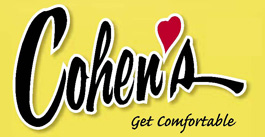 It’s been in Peoria 127 years, but this will be the last year for Cohen Furniture Company. The Journal Star reports that
It’s been in Peoria 127 years, but this will be the last year for Cohen Furniture Company. The Journal Star reports that 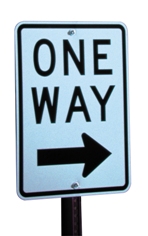 It’s been a while since
It’s been a while since 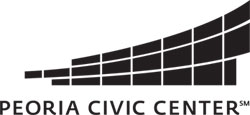 Ever heard of those stories where a person buys a single new piece of furniture and then ends up redecorating the whole house around it? That’s kind of like what the Peoria Civic Center is doing these days.
Ever heard of those stories where a person buys a single new piece of furniture and then ends up redecorating the whole house around it? That’s kind of like what the Peoria Civic Center is doing these days.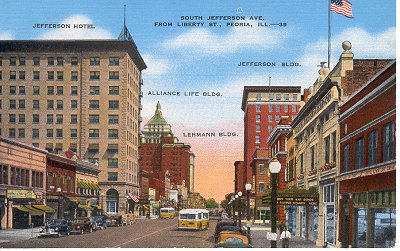
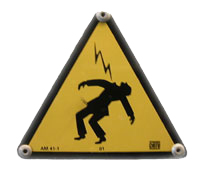 After budget-busting increases in natural gas last winter, now we get to see the other half of our CILCO bills go through the roof.
After budget-busting increases in natural gas last winter, now we get to see the other half of our CILCO bills go through the roof.